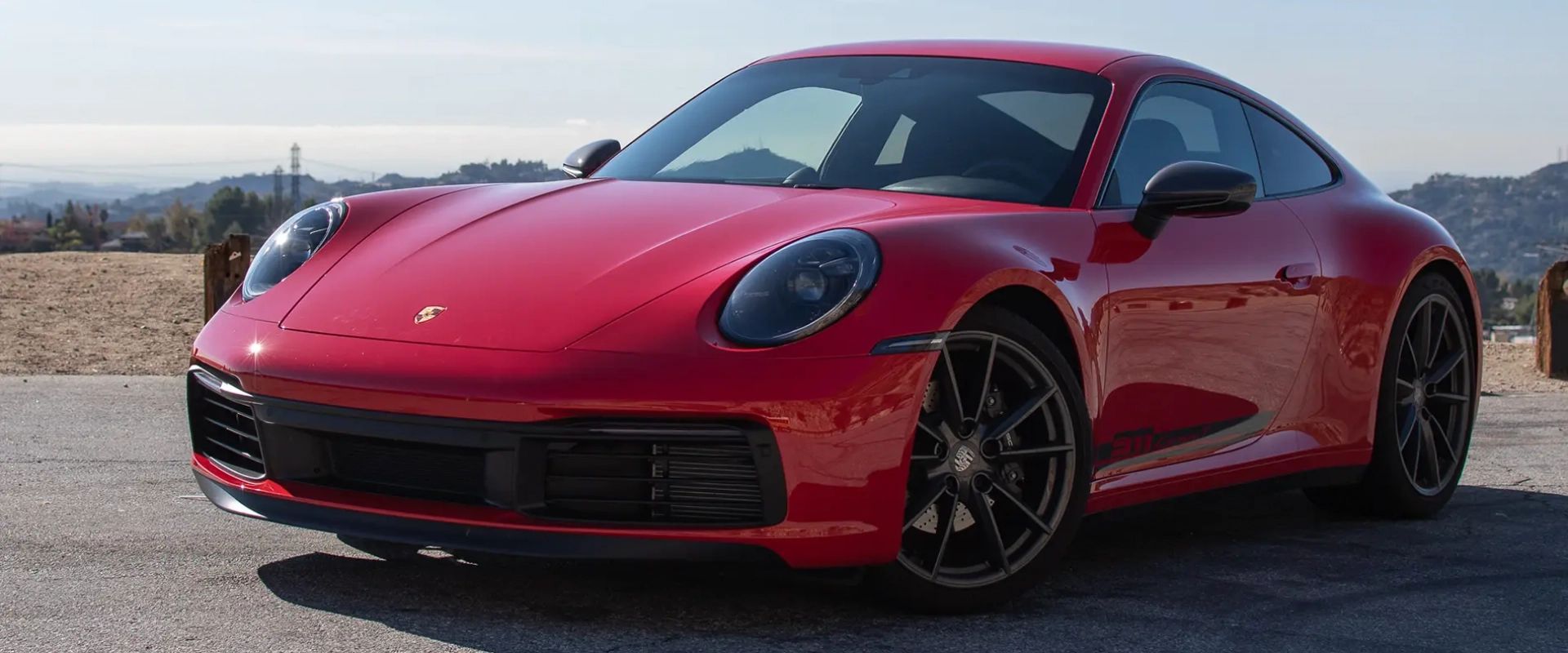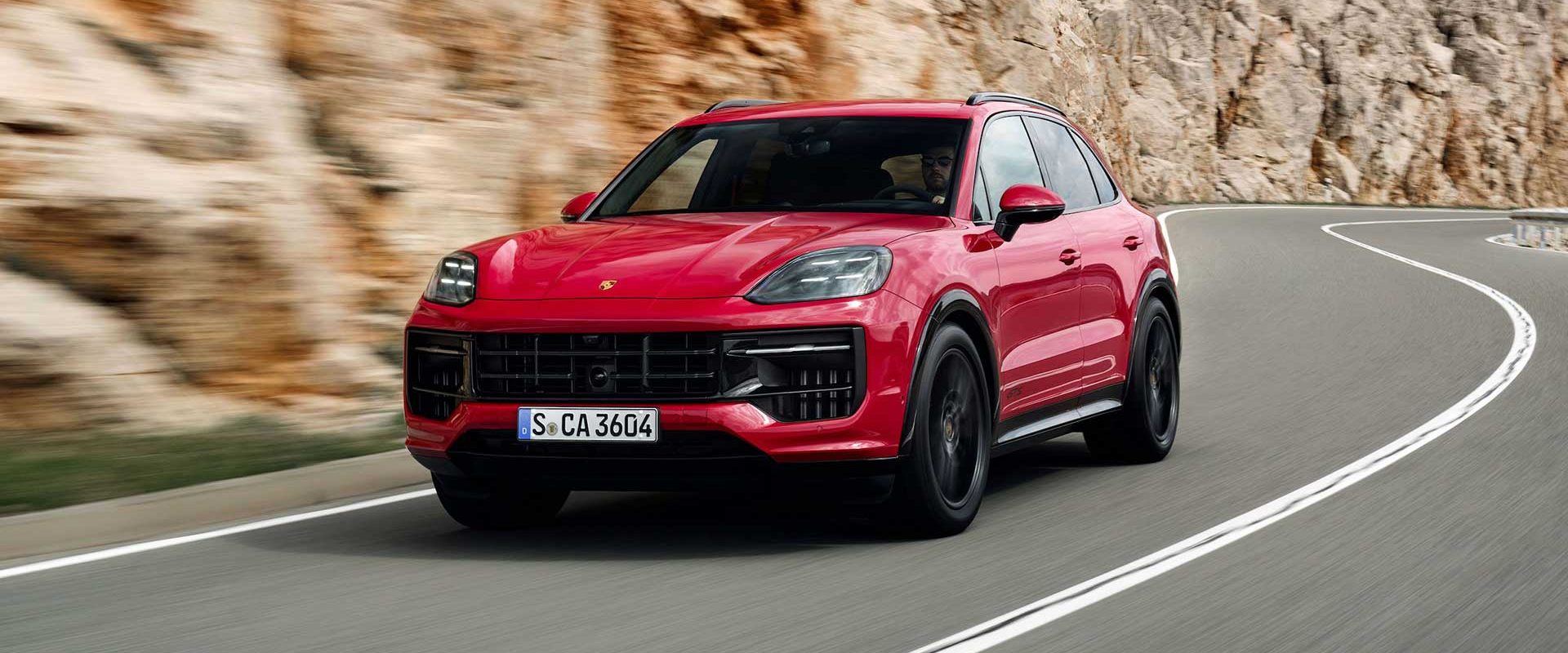2023 Porsche 911 Carrera T
The Porsche 911 Carrera T is back for 2023, revived now for the current 992 generation. It slots in above the base Carrera and below the Carrera S, preserving its touring car roots in the best ways possible: it’s fun, sporty, and cool; and it does it in a purist drivers’ package.
Instead of just hitting the streets of LA, we left the city for the Angeles Crest Highway. It was here where the rear-mounted twin-turbo six-cylinder came to life, displacing 379 horsepower and 331 lb-ft of torque. Power was sent to the rear wheels through a standard seven-speed manual transmission. According to Porsche, a Carrera T manual can do 0-60 sprints in 4.3 seconds.
But as a touring car, I almost feel like the 0-60 stuff and top speed– 181 mph, by the way– is less important. It’s about how it feels on the road. And this engine is perfect for the Carrera T’s job. Smooth acceleration, accurate response and harmonics you just can’t get enough of. The transmission is slick, and the clutch is firm in actuation without being a burden.
Sticking to the road was easy thanks to the mechanical limited slip differential with Porsche Torque Vectoring– a standard feature on the Carrera S trickled down to the T. The Porsche Active Suspension Management system and Sport Chrono Package are also included, though rear-axle steering, which my car had, is an option.
After some time driving, I had a realization– thinking back to another T I drove on similar roads…
“You know, it’s kinda funny. I was out here with the Macan T not that long ago, and I made a comment then about how the Macan T was a little sportier without going full-bore. That’s exactly the case with the Carrera T. It’s meant to be sort of a sportier ride, a very– almost like a purist kind of experience without going all-out, right? Now, they accomplish this first and foremost by being a 911, right? It’s going to sport. But, uh, standard you get a seven-speed manual and you get a rear-seat delete. Now, you can opt for an 8-speed PDK and you can also throw those rear seats back in if you so choose, and that’s fine, but I think the way I have this one optioned is just perfect. Like, this is how I would want it. So that, along with the lightweight glass, less sound deadening to let all the good noises in, um, and the Porsche Active Suspension– all those things, it all culminates into yeah, exactly that: a purist, just totally fun experience.”
So, the Carrera T brings in some of the more driver-focused amenities and also does it while saving a little weight in the process, but it does so without stripping away all the premium features you’d realistically still want. 4-way power sport seats are standard, as are the digital gauge cluster and infotainment screen; the latter of which I used for Apple CarPlay. My car’s seats were the optional 18-way Adaptive Sport Seats– very comfortable, and stylish with the 911 name embroidered up top.
The Carrera T stands apart from the crowd in some obvious ways, like the big side profile designations and rear badging, but it also accentuates the exterior with various trimmings in Agate Gray. The wheels are finished in Titanium Grey and carry the theme well. All in all, it’s nice to have something a little bespoke in a near-entry trim.
Now, I understand that an “entry level Carrera” may sound like an oxymoron to some, but that’s what it is, starting around $118,000 with delivery. My Guards Red tester ultimately optioned out to $137,480, so you can get a little gung-ho with the options– some of which I highly recommend for that driver’s experience, like rear axle steering.
So, to reiterate my opener: the 2023 Porsche Carrera T is a fine addition in the lineup, slotting in perfectly above the Carrera and below the Carrera S. It’s fun, sporty, and– at least in my opinion– undeniably cool.
And we’ll have plenty more cool cars soon, right here on MotorWeek.
2025 Porsche Cayenne GTS
For 2025, Porsche has reinvited the GTS to the Cayenne party, and it’s dressed to impress. Though the improvements go way deeper than a new front fascia with larger intakes; so, it was off to Atlanta, Georgia for some First Drive seat time.
The Cayenne GTS is powered by a twin-turbo 4.0-liter V8, now unleashing 493 horsepower and 487 lb-ft of torque, increases of 40 hp and 30 lb-ft compared to the previous GTS. But that isn’t even the best of it. The GTS borrows components from the incredible Cayenne Turbo GT, which we tested at this year’s Roebling Round Up.
That includes a separate water-cooling circuit for the all-wheel drive transfer case for greater endurance and the Turbo GT’s steering knuckles for more negative camber. A two-valve air suspension setup is standard, keeping things planted, responsive and comfortable. This carryover of components makes the Cayenne GTS a practical people mover for the driver at heart.
ALEXANDER KELLUM: “It may not be where all the magic happens, but to me the best ingredient in that cauldron of performance is the engine: a 4.0-liter V8. It’s super responsive, it sounds great, it’s got a good purr to it. This is a great highway cruiser, partially because of that engine; but then, out here on the backroads, yeah, all those suspension tweaks—they really do add up to something. This is a great Cayenne for those who want the luxury SUV experience, but they also just like to drive.”
Perhaps best of all, those heightened reflexes don’t cost Turbo GT dollars. The 2025 Porsche Cayenne GTS starts around $127,000, with the Coupe just over $130,000— a fair bit less than its big brother’s $200,000 price tag.
We’ll have more GTS goodness and more Quick Spins… soon!







